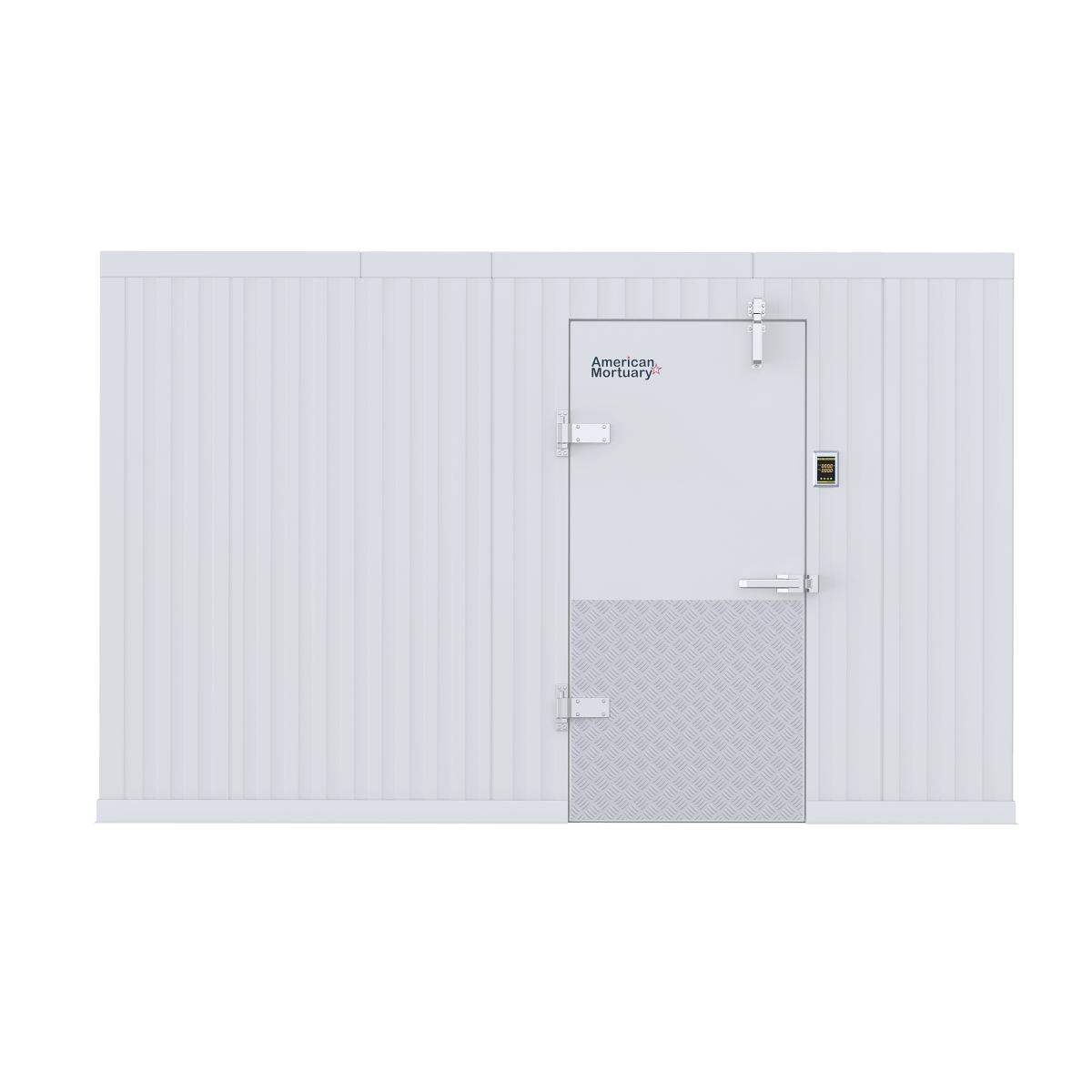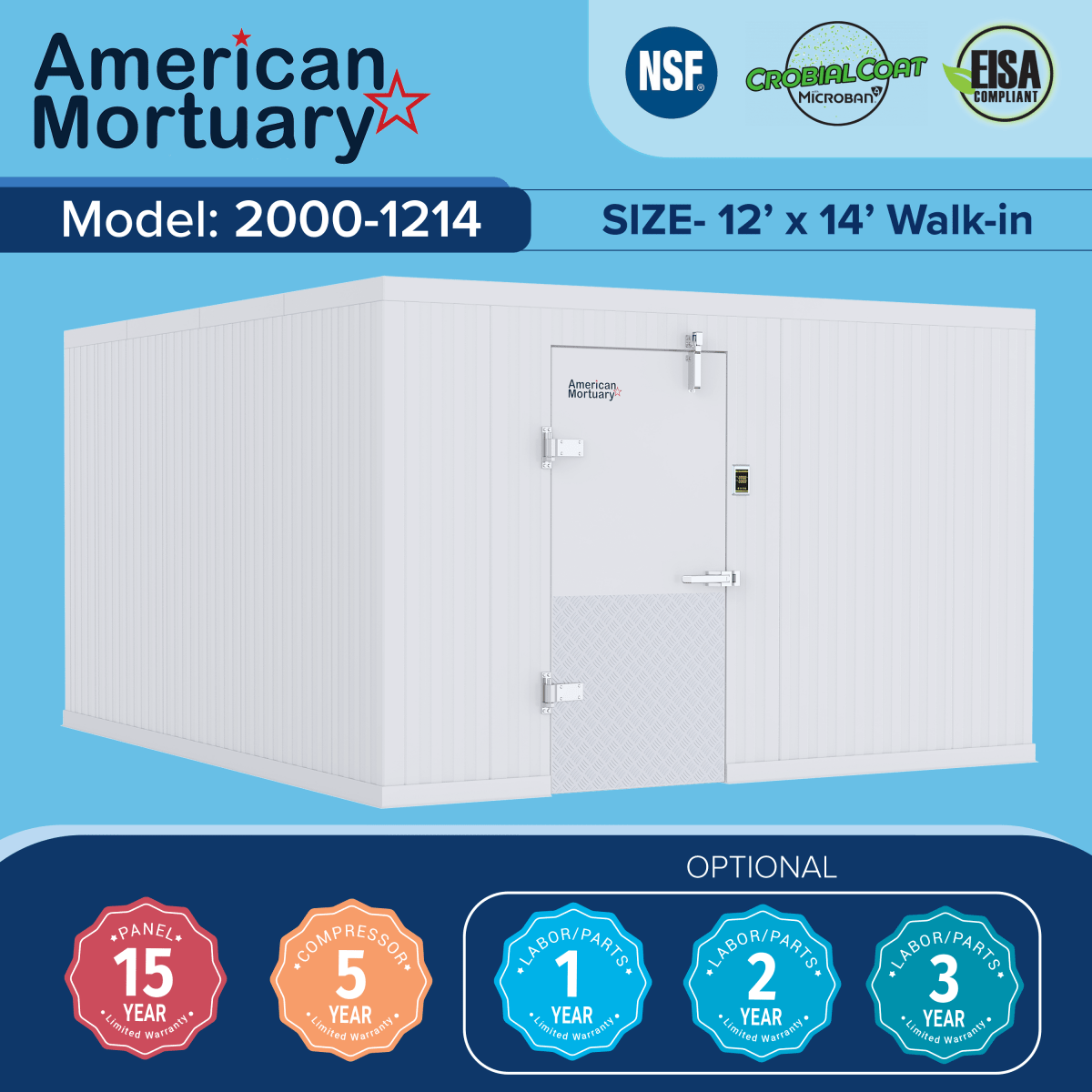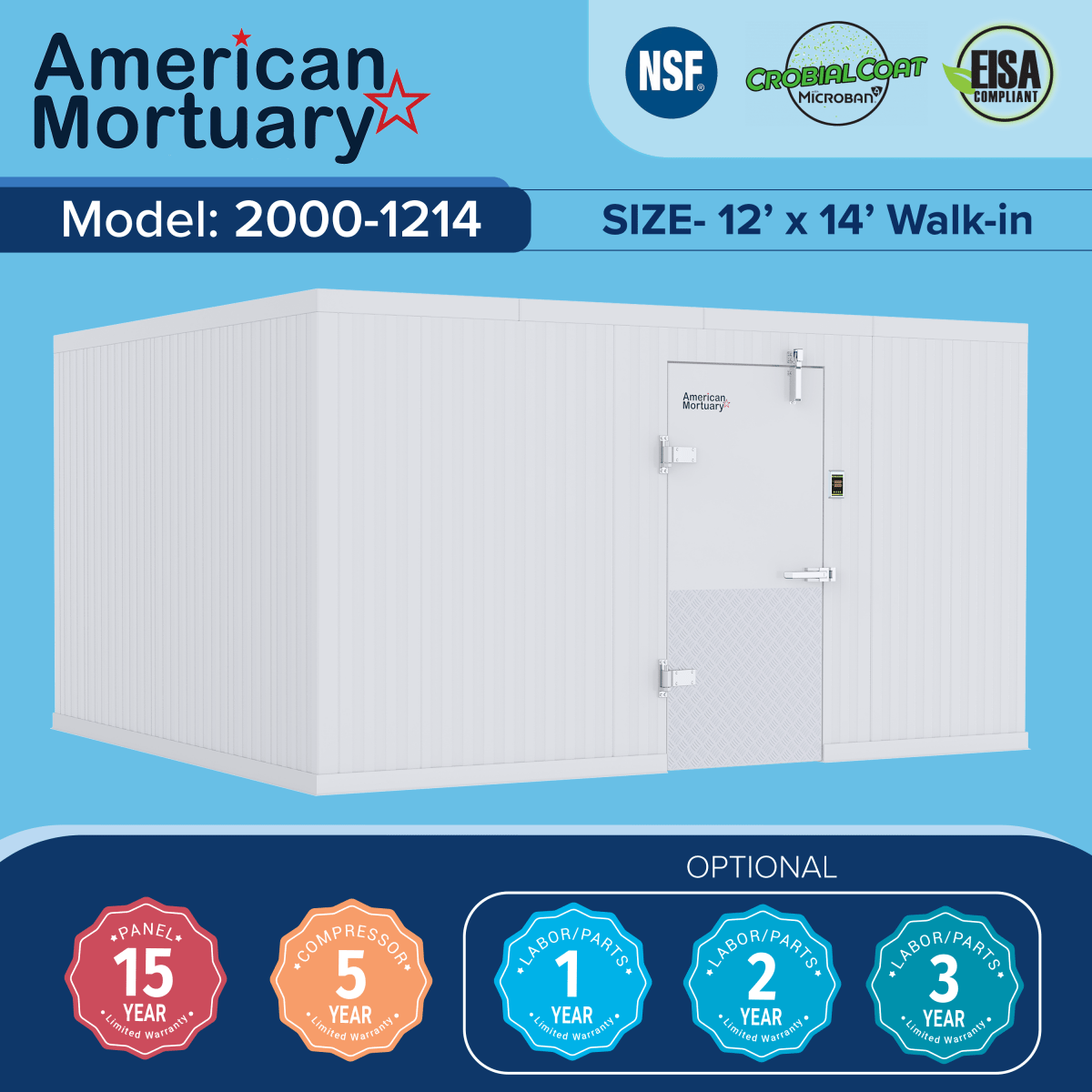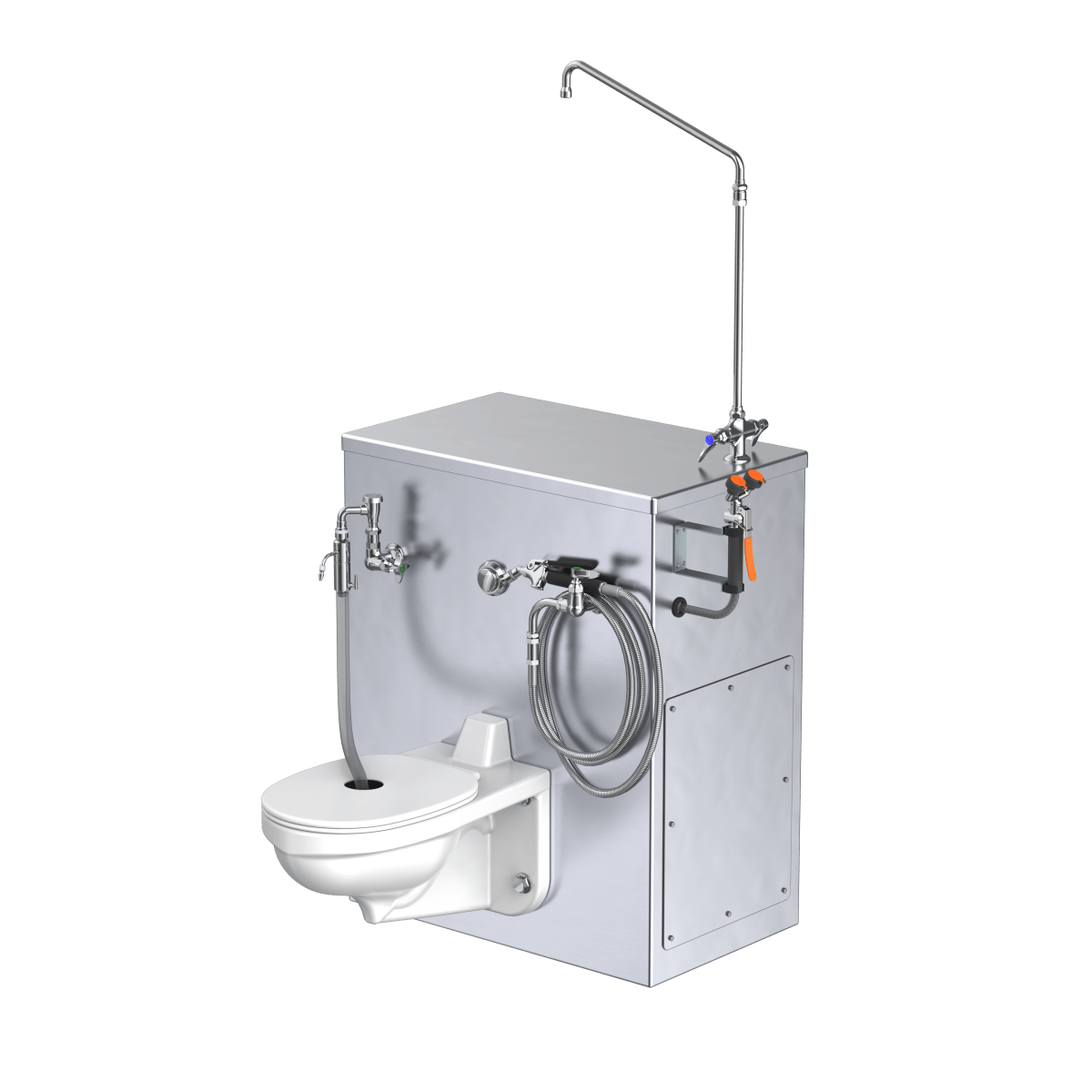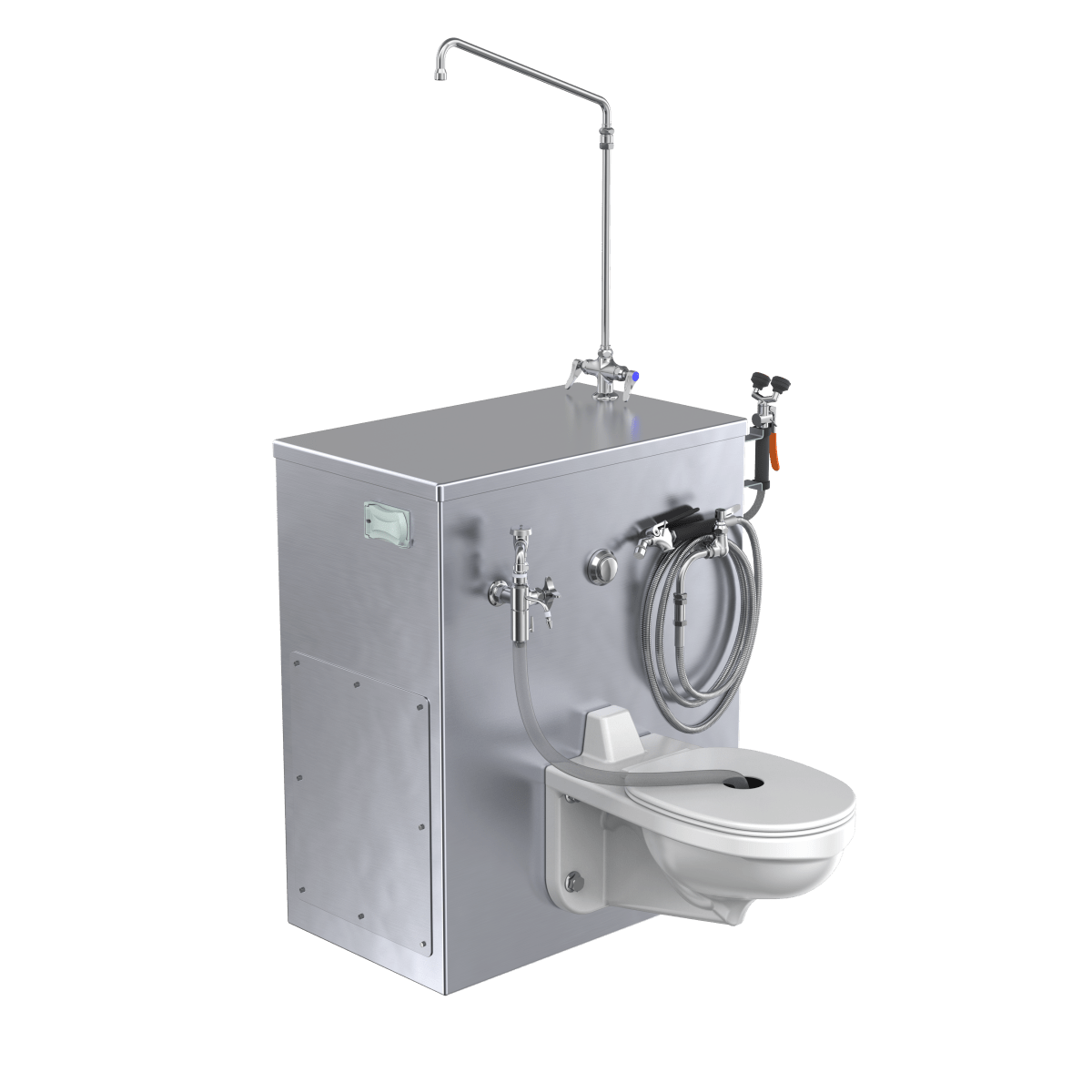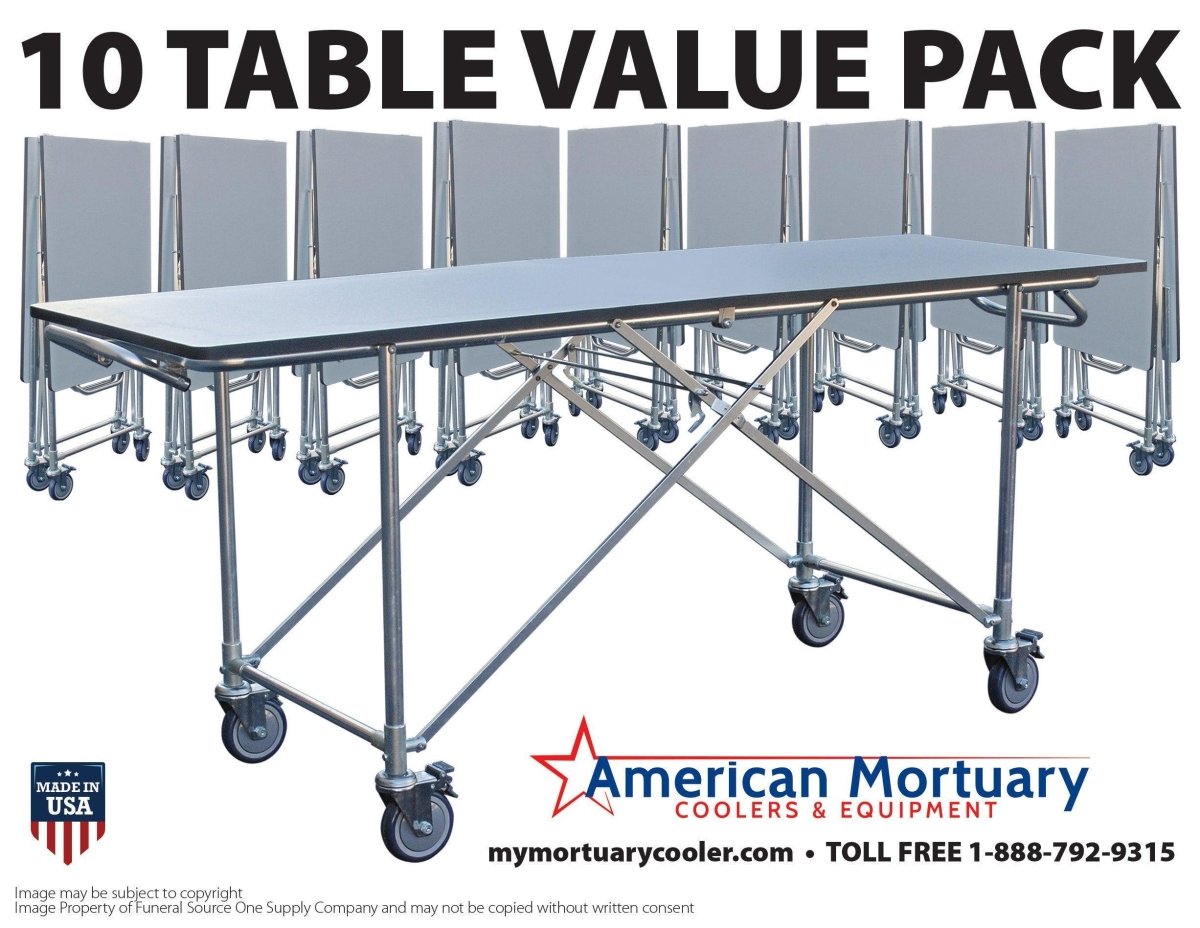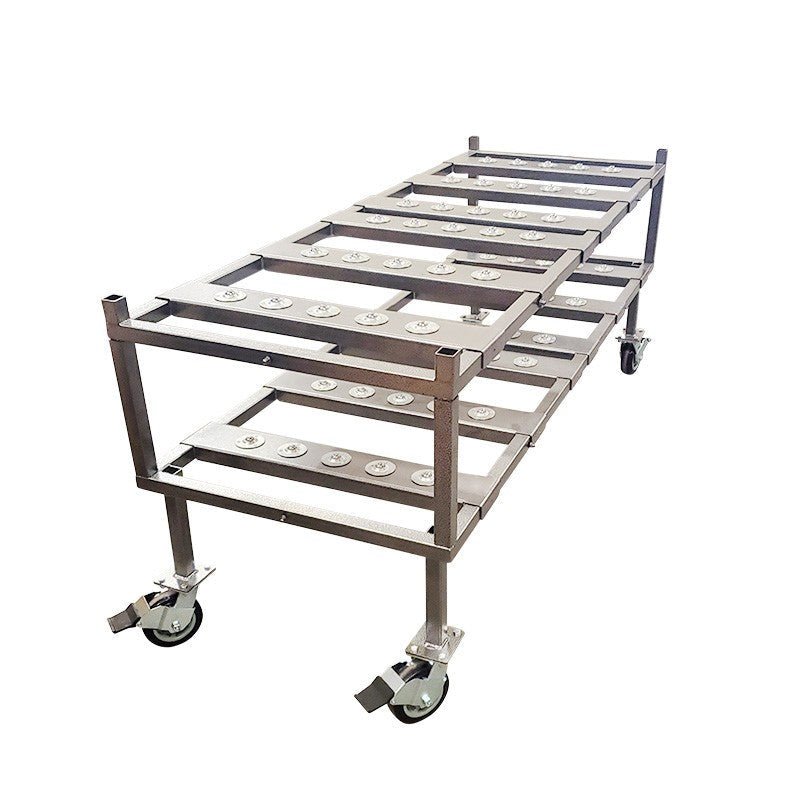The Timeless Appeal of Space-Saving Design
Vintage Stakmore folding chairs represent the perfect blend of mid-century craftsmanship and practical space-saving design. If you're looking to purchase these collectible pieces, here's what you need to know:
| Quick Guide to Vintage Stakmore Folding Chairs |
|---|
| Price Range: $75-150 per chair, $400-600 for sets of 4 |
| Most Collectible Eras: 1940s-1960s |
| Popular Materials: Solid walnut, fruitwood, original vinyl upholstery |
| Key Features: Ultra-slim folding design (2-3 inches when folded), patented steel-tongue hinge mechanism |
| How to Identify: Look for Stakmore labels under seat, patent numbers, and distinctive curved backs |
When vintage Stakmore chairs first appeared in American homes during the mid-20th century, they revolutionized space-saving furniture with their innovative folding mechanism and solid wood construction. Unlike typical folding chairs, Stakmore pieces were designed to look like permanent furniture when in use, featuring neat designs ranging from Shaker-inspired ladderbacks to faux bamboo campaign styles.
What makes these chairs particularly special is their patented folding mechanism, which allows them to collapse into an incredibly slim profile of just 2-3 inches. This made them perfect for apartments and smaller homes where storage space was at a premium. Today, collectors prize these chairs not just for their practicality but for their authentic mid-century aesthetic and solid construction.
I'm Mortuary Cooler, and I've spent over a decade collecting and researching vintage Stakmore folding chairs while helping funeral directors find space-efficient seating solutions for their facilities. My appreciation for these functional pieces of American design history has only grown as I've witnessed their enduring quality and ingenious engineering.

Handy vintage stakmore folding chairs terms:
The Legacy of Stakmore Folding Chairs
The story of vintage Stakmore folding chairs begins in the busy furniture town of Jamestown, New York in 1922. As America roared through the prosperity of the post-WWI era, a small company with big ideas introduced something revolutionary: a folding chair that didn't look or feel like a temporary seat.

The heart of Stakmore's innovation was their ingenious patented steel-tongue hinge mechanism. This clever bit of engineering allowed their chairs to fold completely flat while remaining rock-solid when opened – a balance few competitors could achieve. Patent number 1,471,972 would become the foundation of their decades-long success story.
What's particularly fascinating about Stakmore is how they flourished during the Great Depression when countless furniture makers were closing their doors. While families downsized their homes, Stakmore's practical space-saving designs became not just a luxury but a necessity. Their chairs offered something precious: quality furniture that could disappear when not needed.
"People didn't want to feel like they were compromising," explained a third-generation furniture restorer I met at an antique show in Nashville. "Stakmore chairs gave them real furniture that just happened to fold away – not those rickety card table chairs everyone dreaded sitting in."
Through the 1940s and 1950s, as America's design aesthetic evolved, so did Stakmore's offerings. They acceptd mid-century modern touches while staying true to their functional roots. The post-war housing boom created the perfect environment for their space-conscious designs as young families filled newly-built suburban homes.
Unlike many American manufacturers, Stakmore maintained their commitment to domestic production throughout most of the 20th century. When others chased cheaper overseas labor, Stakmore kept crafting their chairs on American soil, preserving the quality and craftsmanship that collectors now treasure in vintage Stakmore folding chairs.
This dedication to American manufacturing excellence is beautifully chronicled on the Stakmore Folding Chairs blog, where furniture enthusiasts share stories and photos of their prized vintage finds. The timeline of the brand reveals how these chairs moved from practical household items to sought-after collectibles representing a golden age of American furniture design.
At American Mortuary Coolers, we appreciate the parallel values of space efficiency and durability that Stakmore embodied – the same principles we bring to our mortuary solutions. There's something uniquely satisfying about designs that solve real problems while maintaining their aesthetic appeal decade after decade.
Vintage Stakmore Folding Chairs: What Makes Them Unique
There's something magical about vintage Stakmore folding chairs that sets them apart from today's mass-produced alternatives. These aren't just chairs that happen to fold—they're beautifully crafted furniture pieces that secretly transform when needed.
Materials and Construction
When you run your hand across an authentic Stakmore chair, you immediately feel the difference. Unlike today's lightweight folding chairs, these pieces were built from solid hardwoods that have stood the test of time.
Most collectors eagerly seek out models crafted from solid walnut, which offers that perfect mid-century warmth and character. The fruitwood versions deliver a honey-colored glow that brightens any dining room. Some special editions feature maple or oak, particularly in their more traditional styles.
The upholstery tells its own story too. Original vinyl in classic colors like deep burgundy, forest green, or simple black has become increasingly desirable among collectors. Some models featured textured fabric upholstery, but what really impresses is how comfortable these chairs actually are. Unlike modern folding chairs that sacrifice comfort for convenience, Stakmore built in proper spring support and generous padding.
The Revolutionary Folding Mechanism
The true genius of Stakmore chairs becomes apparent the moment you fold one. That satisfying mechanical action reveals decades of engineering refinement.
"I inherited my grandmother's set of four walnut Stakmores," shares Jennifer from Boston. "Guests are always shocked when dinner's over and I fold these substantial dining chairs into a stack barely wider than a bookshelf. The whole set takes up less space than a single regular chair!"

This remarkable space-saving ability comes from Stakmore's patented steel-tongue hinge that locks firmly when open, creating a wobble-free seating experience. When folded, these chairs collapse to an astonishingly slim 2-3 inches, allowing them to be stored in narrow spaces like behind doors or in shallow closets.
The engineering is truly impressive: the seat folds upward with a smooth motion while the back support aligns perfectly with the legs. This creates that ultra-slim profile that made Stakmore chairs perfect for smaller mid-century homes and apartments.

Distinctive Aesthetics
What truly makes vintage Stakmore folding chairs treasures worth collecting is their design versatility. These weren't utilitarian pieces meant to be hidden away—they were designed to complement the finest dining rooms of their era.
Early Stakmore models from the 1940s featured more traditional styling with neatly turned legs. As America acceptd mid-century modern design, Stakmore followed with cleaner lines and those iconic tapered legs that collectors covet today.
The 1960s brought the delightful campaign-style chairs with faux bamboo turnings that add a touch of exotic sophistication to any space. For those with more traditional tastes, the Shaker-inspired ladderback models offer timeless appeal that works in almost any setting.
As we at American Mortuary Coolers have finded while furnishing reception areas, these chairs solve practical problems while adding authentic vintage character. Like our custom-crafted mortuary solutions, Stakmore chairs represent that perfect blend of thoughtful engineering and beautiful design—proof that functional items can also be things of beauty.
If you're interested in learning more about space-saving furniture options, our guide to folding chairs for schools offers additional insights into durable, space-conscious seating solutions.
Authenticating & Identifying Your Chair
Figuring out if you've got genuine vintage Stakmore folding chairs is a bit like being a furniture detective - fun, rewarding, and sometimes surprising! After years of examining these beautiful pieces, I've developed a keen eye for the real deal.
The first place most collectors look is under the seat. Authentic Stakmore chairs usually have paper labels affixed to the underside - these little historical documents might be yellowed or partially worn away, but finding one intact is like striking gold. As vintage dealer Maria Sanchez told me, "The label is the first thing I look for. Finding one intact significantly increases the chair's value and confirms authenticity."
Don't worry if your label is missing though! The chairs often feature patent numbers (the original #1,471,972 was issued in 1923), with subsequent patents following as the design evolved. Sometimes you'll even find the Stakmore name stamped or branded directly into the wooden frame.
The folding mechanism itself is a dead giveaway. That patented steel-tongue hinge is distinctive - when you see it, you know you're looking at quality engineering that's stood the test of time. The construction quality speaks volumes too, with mortise and tenon joints common in authentic pieces, and hardware that was often brass-plated in earlier models.
Take a moment to measure your chair - most Stakmore dining chairs have a seat height of approximately 17 inches, with an overall height between 30-32 inches. The distinctive curve of the back splat is particularly noticeable in mid-century models, with an ergonomic design that's both comfortable and visually pleasing.
The wood itself can help you date your chair. Those gorgeous 1940s models often featured darker stains with more traditional styling, while the 1950s-60s pieces frequently showcased walnut with a natural finish. By the 1960s-70s, fruitwood finishes gained popularity, and those charming faux bamboo turning techniques started appearing.
For more information about identifying quality folding chairs in general, check out our guide to folding chair basics.
Spotting Genuine Vintage Stakmore Folding Chairs Markings
When authenticating your chair, pay close attention to these telltale signs:
The maker's decal typically includes the Stakmore name and logo, "Made in USA" or "Jamestown, NY" notation, and sometimes even a model number or production date. Earlier models (pre-1960s) typically used slotted screws, while the patented hinge mechanism maintained a consistent design throughout production.
One collector shared with me, "What I love about hunting for vintage Stakmore folding chairs is the detective work. Finding that hidden label or recognizing the distinctive curve of a Stakmore back is like solving a little mystery."
Look for wear patterns that make sense - slight wear on the folding mechanism from repeated use, patina on wooden surfaces consistent with age, and original upholstery with period-appropriate fading. These signs of authentic aging can't be easily faked and tell the story of a chair that's been loved and used for decades.
When examining the back design, notice the gentle ergonomic curve that's both comfortable and aesthetically pleasing - it's one of those subtle details that Stakmore got just right, and a feature many imitators couldn't quite capture.
Top 4 Collectible Stakmore Models
When you dive into vintage Stakmore folding chairs, you'll find that certain models stand out as true collector treasures. These chairs aren't just functional pieces—they're little slices of American design history that tell the story of changing tastes across decades.
Shaker Ladderback Folding Chair
The Shaker-inspired ladderback might just be the most timeless design in the Stakmore lineup. With its clean lines and honest construction, it embodies that perfect blend of beauty and practicality.
I once spoke with a collector in Vermont who had a set of four cherry ladderbacks from the late 1940s. "These chairs have served three generations of my family," she told me. "When guests come over, nobody believes they fold until I show them."
What makes these chairs special is their distinctive horizontal slats forming that classic "ladder" back, typically crafted in warm cherry wood. Many featured rush-style seats, though you'll also find versions with padded upholstery. Their 1940s-50s heyday coincided with America's renewed interest in traditional craftsmanship after World War II.
Arts & Crafts Mission Folding Chair
For lovers of substantial, architectural furniture, Stakmore's Mission-style chairs offer impressive presence despite their space-saving design. Drawing inspiration from Gustav Stickley and the Arts & Crafts movement, these chairs feature quartersawn oak that proudly displays those distinctive ray fleck grain patterns.
The vertical slat backs and straight, substantial lines give these chairs a weightiness that belies their folding nature. Typically finished in medium to dark fruitwood stains, they command some of the highest prices on today's vintage market—especially when found in complete sets of four or six.
Faux Bamboo Campaign Folding Chair
Perhaps the most distinctively styled of all vintage Stakmore folding chairs are the faux bamboo campaign models that captured America's imagination during the 1960s and 1970s. These chairs perfectly reflect that era's fascination with exotic and Asian-inspired designs.
"They transport you right back to those retro game nights," laughs furniture dealer Susan Wong. "You can almost smell the fondue and hear Herb Alpert playing in the background."
With wood cleverly turned to mimic bamboo joints, often accented with brass details, these chairs frequently featured faux leather seat pads in sophisticated black or brown. Many were sold as part of complete game table sets—perfect for those bridge nights and poker games so popular in mid-century suburbia.
Coronet Sculptural-Back Folding Chair
For mid-century modern enthusiasts, the Coronet line represents the pinnacle of Stakmore's design evolution. Produced in collaboration with Norquist Manufacturing during the 1960s, these chairs could easily be mistaken for high-end Danish imports—until you find their ingenious folding capability.
The solid walnut frames showcase beautiful grain patterns, while the sculptural curved backs provide excellent lumbar support—a perfect marriage of form and function. Original vinyl upholstery in period colors like black, olive green, or harvest gold completes the authentic mid-century look.
"What impresses me most about the Coronet line," explains mid-century specialist Thomas Reed, "is how Stakmore managed to create chairs that look like they belong in a design museum, yet fold completely flat for storage. It's engineering artistry."
At American Mortuary Coolers, we've seen how these versatile chairs serve funeral homes beautifully—providing dignified, space-saving seating that can be quickly deployed for services and stored away afterward. Their timeless design and sturdy construction make them practical investments for any space where occasional extra seating is needed.
Market Value, Collectibility & Recent Sales
The market for vintage Stakmore folding chairs has been quietly but steadily growing over the past decade. As more people find the charm of mid-century design, these practical pieces of American craftsmanship have found their way into the hearts of collectors and interior designers alike.
Individual chairs in good original condition typically fetch between $75-$150 on the open market. If you're lucky enough to find a complete matching set of four chairs, expect to pay $400-$600 – significantly more than the sum of individual pieces. The most coveted examples – those rare models with original documentation or fascinating provenance – can command $1,000 or more for a complete set.

"What we're seeing is that condition and completeness dramatically affect value," explains antique dealer Robert Jameson. "A complete set of four matching chairs in original condition might sell for three times what four individual chairs would bring separately."
The folding game table sets are particularly sought after, with their chairs often commanding premium prices when sold as a complete ensemble. There's something special about owning a piece of functional history that can still serve its original purpose at your next card night.
When evaluating a vintage Stakmore folding chair, condition is everything. Museum-quality examples with intact original finish, good upholstery, present labels, and smoothly operating mechanisms represent the top tier of collectibility. Good collectible condition allows for some patina and perhaps period-appropriate reupholstery, while fair condition pieces show more significant wear but remain structurally sound.
I recently spoke with a collector in Nashville who stumbled upon four matching Stakmore chairs at an estate sale for just $200. "They needed new upholstery, but the walnut frames were gorgeous," she told me. "After a simple restoration, they're now the highlight of my dining room – and worth at least twice what I paid."
Current Prices for Vintage Stakmore Folding Chairs
The market for vintage Stakmore folding chairs varies significantly depending on where and how you shop. On eBay and similar online marketplaces, individual chairs in usable condition typically sell for $50-100, while those in excellent original condition fetch $100-150. Complete matching sets of four chairs generally range from $300-500, with rare models or complete dining/game sets commanding $500-1,000 or more.
High-end dealers and platforms like 1stDibs naturally price higher, with premium condition individual chairs listed at $150-250. Designer-attributed models can reach $250-350 per chair, while complete sets in exceptional condition range from $600-1,200. The cream of the crop – those rare models with original documentation – might be priced between $1,000-2,000.
Geography plays a fascinating role in pricing too. You'll typically pay more in design-conscious coastal cities like New York or San Francisco, while better values can often be found in Midwest and Southern markets. Mid-century hotspots like Palm Springs command premium prices due to local demand, and interestingly, international buyers (particularly from Europe and Japan) often pay top dollar for exported American pieces.
"Shipping costs have become a significant factor in the vintage chair market," notes online dealer Sarah Miller. "A set of four Stakmore chairs might cost $150-200 to ship across the country, which buyers need to factor into their budget."
For collectors looking to explore authentic Stakmore designs, the Stakmore official site offers insights into the company's continuing legacy, though vintage models must be hunted down through secondary markets, estate sales, and auction houses.
At American Mortuary Coolers, we've found that many funeral homes appreciate vintage Stakmore folding chairs for their discreet storage capabilities and dignified appearance during services. Their slim folding profile makes them perfect for facilities where space efficiency matters – not unlike our custom mortuary coolers designed to maximize available space while providing essential functionality.
Care & Restoration Essentials
Taking proper care of your vintage Stakmore folding chairs isn't just about maintaining their value—it's about preserving a piece of American craftsmanship that deserves to be enjoyed for generations to come. Whether you've just scored your first Stakmore at an estate sale or you're caring for chairs passed down through your family, these practical tips will help keep them looking and functioning their best.
Cleaning and Maintenance
The wooden frames of your Stakmore chairs require gentle attention. I've found that regular dusting with a soft cloth prevents buildup that can eventually damage the finish. When deeper cleaning is needed, a slightly damp cloth with mild soap works wonders—just be sure to dry the wood thoroughly afterward.
"I apply a quality furniture wax to my Stakmore collection twice yearly," shares Jane, a collector from Boston. "It's like giving them a spa day, and the warm glow it brings to the walnut is absolutely worth the effort."
For vinyl upholstery, which is common on many vintage Stakmore folding chairs, gentle cleaning with mild soap and water keeps it looking fresh. I've had great success using dedicated vinyl conditioners a few times a year to prevent cracking and maintain suppleness. The original vinyl upholstery is part of what makes these chairs special, so keeping it in good condition significantly impacts their value.
The folding mechanism—that ingenious design that makes Stakmore chairs so special—needs occasional TLC too. Check those hinges and screws every few months to make sure everything's tight. A tiny dab of white lithium grease on moving parts keeps them operating smoothly. Avoid WD-40 or penetrating oils, as these can damage the surrounding wood finish and attract dust.
Restoration Considerations
When it comes to restoration, the golden rule with vintage Stakmore folding chairs is "less is more." Many collectors have shared stories of heartbreak after attempting full refinishing only to watch their chair's value plummet.
"The patina that develops over decades tells the chair's story," explains furniture conservator Elena Rodriguez. "Once you strip that away, you can never truly get it back."
For DIY enthusiasts, simple repairs like tightening loose screws or cleaning the original finish are generally safe projects. However, when it comes to upholstery replacement or mechanical repairs to the folding mechanism, professional help often yields better results. A furniture restorer with experience in mid-century pieces will understand the unique construction of Stakmore chairs.
If your chair's upholstery is beyond saving, consider documenting the original pattern and materials before replacement. Using period-appropriate fabrics or vinyl will maintain the chair's authentic character. I once photographed the original upholstery of my Coronet chairs from every angle before having them recovered in a nearly identical vinyl—the difference in value between that approach and using a contemporary fabric is substantial.
For structural repairs, traditional hide glue is preferable for authenticity, and replacement hardware should match the original style as closely as possible. The webbing under the seat sometimes needs attention in older chairs, and using traditional techniques will ensure proper support without compromising the folding mechanism.
For more comprehensive guidance on caring for space-saving furniture like your Stakmore chairs, our guide to space-saving furniture care offers additional insights and techniques.
These chairs have already survived decades—with your thoughtful care, they'll continue bringing practical beauty to homes for many years to come. At American Mortuary Coolers, we appreciate functional design that stands the test of time, whether it's our custom mortuary solutions or the classic Stakmore chairs many of our clients use in their waiting areas.
Comparison & Alternatives
When you're hunting for space-saving seating, it's helpful to understand how vintage Stakmore folding chairs stack up against their competitors. While Stakmore set the gold standard for folding chairs that doubled as "real furniture," other manufacturers created similar options that you might encounter in your vintage shopping trips.
| Feature | Vintage Stakmore | Vintage Coronet | Vintage Samsonite |
|---|---|---|---|
| Materials | Solid hardwoods (walnut, fruitwood) | Often solid hardwoods, sometimes veneers | Metal frames with vinyl upholstery |
| Folded Thickness | Ultra-slim (2-3 inches) | Slim (3-4 inches) | Bulkier (4-5 inches) |
| Weight | Substantial (8-12 lbs) | Medium (7-10 lbs) | Lighter (5-8 lbs) |
| Mechanism | Patented steel-tongue hinge | Various folding systems | Simple pivot hinges |
| Aesthetics | Looks like permanent furniture | Similar to permanent furniture | Clearly identifiable as folding chairs |
| Average Price | $75-150 per chair | $50-125 per chair | $30-75 per chair |
| Collectibility | High | Medium | Medium-Low |

Key Competitors
I've spent years examining different vintage folding chairs at estate sales and auctions, and there's truly something special about Stakmore's quality. That said, you might come across these other notable brands in your search:
Coronet Wonderfold chairs feature aesthetics similar to Stakmore but with slightly different folding mechanisms. Interestingly, these companies weren't always competitors – Stakmore and Coronet occasionally collaborated, as evidenced by the Coronet for Norquist line we discussed earlier. I once found a set where I initially couldn't tell if they were Stakmore or Coronet until I spotted the distinctive label under the seat!
Leg-O-Matic chairs, produced by Tucker Manufacturing Company, were quite popular during the mid-century period. You can spot them by their distinctive X-frame folding mechanism, which differs from Stakmore's more streamlined approach. They're charming in their own right, but don't fold quite as flat as vintage Stakmore folding chairs.
Samsonite might surprise you – yes, the luggage company! They produced folding furniture from the 1950s through the 1970s. Their chairs typically featured metal frames with vinyl upholstery and had a more utilitarian appearance. While practical, they don't hide their "folding chair identity" nearly as well as Stakmore models.
Stylaire produced folding chairs with a similar aesthetic to Stakmore but often cut corners with lighter construction and less refined folding mechanisms. I've found they tend to wobble more when opened, lacking the rock-solid feel of a genuine Stakmore.
As furniture historian David Chen explained to me while I was researching this article, "What separates vintage Stakmore folding chairs from competitors is their engineering. Their folding mechanism was more sophisticated, allowing the chairs to fold flatter while remaining sturdier when open. They also invested more in quality materials and craftsmanship."
This superior engineering explains why Stakmore chairs have become the darlings of the vintage market. When I help funeral homes find seating solutions at American Mortuary Coolers, I often recommend keeping an eye out for these vintage gems – they provide the perfect blend of space-saving practicality and timeless style that works beautifully in reception areas where space flexibility matters.
Frequently Asked Questions about Vintage Stakmore Folding Chairs
How can I date my Stakmore chair?
Dating your vintage Stakmore folding chairs is like solving a delightful puzzle. Several clues can help you pinpoint when your chair was made.
The labels and markings are your first stop in this detective work. Early labels from the 1920s-40s prominently feature "Jamestown, NY," while the distinctive Stakmore logo became the centerpiece of mid-century labels in the 1950s-60s. If your chair has a label with model numbers or manufacturing codes, it likely dates from the 1970s-80s.
Design elements tell another part of the story. Pre-1950s Stakmore chairs often accept more traditional styling with neatly turned legs. As America fell in love with mid-century modern design, Stakmore followed suit – their 1950s-60s models feature those characteristic tapered legs we all recognize. By the 1960s-70s, they were incorporating trendy faux bamboo details and campaign styling.
"One good dating tip is to look at the upholstery staples," suggests Michael Wong, a vintage furniture restorer I met at an antique fair in Nashville. "Hand-driven tacks typically indicate pre-1950s construction, while narrow crown staples suggest 1950s-70s production."
The construction techniques and hardware provide additional clues. Earlier models showcase more hand-crafted joinery, while later pieces incorporate more machine-made elements. Even the humble screw evolved – from slotted heads in earlier decades to Phillips heads later on, while hardware finishes changed from brass-plated to various other finishes over time.
Are replacement parts still available?
Finding replacement parts for your beloved vintage Stakmore folding chairs can be challenging, but don't lose hope! While the current Stakmore Company still produces folding chairs, they use different mechanisms and unfortunately don't stock vintage replacement parts.
Your best bet is often what we in the restoration community call "donor chairs" – damaged chairs purchased specifically for their parts. I've seen many collectors maintain a small collection of beyond-repair chairs simply as a parts library.
"I maintain a small inventory of vintage Stakmore parts salvaged from beyond-repair chairs," shared James Miller, a furniture restorer I consulted while researching this article. "The hinges are the most sought-after components, as they're specific to Stakmore and difficult to replicate."
Some hardware can be sourced from specialty furniture restoration suppliers, and for truly special pieces, custom fabrication may be worth considering. Local metalworkers or furniture restoration specialists can sometimes recreate parts that are otherwise impossible to find.
What's the best way to ship folded chairs safely?
Having shipped dozens of vintage Stakmore folding chairs myself when helping funeral homes update their seating, I've learned that proper packaging is absolutely crucial. These beautiful pieces deserve careful handling!
Start by ensuring your chair is securely folded and locked in position. Wrap the entire chair in bubble wrap, paying special attention to corners and edges where damage most commonly occurs. Use furniture blankets or additional padding around vulnerable areas like the legs and back.
Place your wrapped chair in a sturdy box with at least 2 inches of packing material on all sides. The key is preventing any movement within the box – fill all void spaces with packing material. Always mark the package as "Fragile" and "This End Up."
For particularly valuable chairs or complete sets, consider double-boxing for extra protection. And always use a shipping service that offers insurance and tracking – the small additional cost provides significant peace of mind.
"I've shipped dozens of vintage Stakmore folding chairs across the country," online dealer Rebecca Torres told me. "The key is preventing any movement within the box and protecting the finish from scratches. I always double-box valuable sets."
At American Mortuary Coolers, we understand the importance of preserving these functional pieces of American design history – they represent the same blend of practicality and quality craftsmanship we strive for in our own products.
Conclusion
Vintage Stakmore folding chairs represent a perfect marriage of form and function that continues to appeal to collectors and practical homeowners alike. Their ingenious space-saving design, quality construction, and timeless aesthetics make them as relevant today as when they were first produced nearly a century ago.
These remarkable chairs aren't just collectibles—they're practical investments that improve your living space while potentially growing in value. Unlike many antiques that sit unused, Stakmore chairs serve a genuine purpose in your home. Their legendary compact storage design means even apartment dwellers or those with limited space can build a collection. I've helped many clients incorporate these chairs into smaller homes where conventional collecting would be impossible.
What's truly impressive about these chairs is their durability. When properly cared for, a vintage Stakmore chair from the 1950s can still provide reliable seating today—how many other household items can make that claim? The solid hardwood construction and ingenious engineering have proven themselves over decades of use.
Styling these versatile pieces in modern homes is surprisingly easy. You might use them as your everyday dining set, knowing they can be quickly tucked away when you need to transform your dining area for other purposes. Many of my customers keep several folded behind a door or in a hall closet, ready to accommodate unexpected guests without cluttering their homes.
For a truly authentic mid-century look, pair your chairs with a matching Stakmore folding table to create a complete game table setting. Or take a more eclectic approach by mixing different Stakmore styles—perhaps combining ladderback chairs with faux bamboo models for an interesting collected aesthetic that showcases the evolution of American design.
At American Mortuary Coolers, we have a deep appreciation for the space-efficient design principles that Stakmore pioneered. While our focus is crafting custom mortuary coolers and equipment for funeral homes across the United States, we share that commitment to quality American craftsmanship and smart space utilization. Our mortuary solutions are built with the same attention to detail and functionality that makes vintage Stakmore folding chairs so enduringly popular.
Whether you're seriously collecting these pieces or simply want well-designed furniture that doesn't waste precious space, vintage Stakmore chairs offer a unique blend of practicality, history, and style that few other furnishings can match. Their clever engineering ensures they'll continue serving and delighting owners for generations to come.
For more information about our approach to space-efficient design in mortuary solutions, visit our guide to mortuary solutions.





